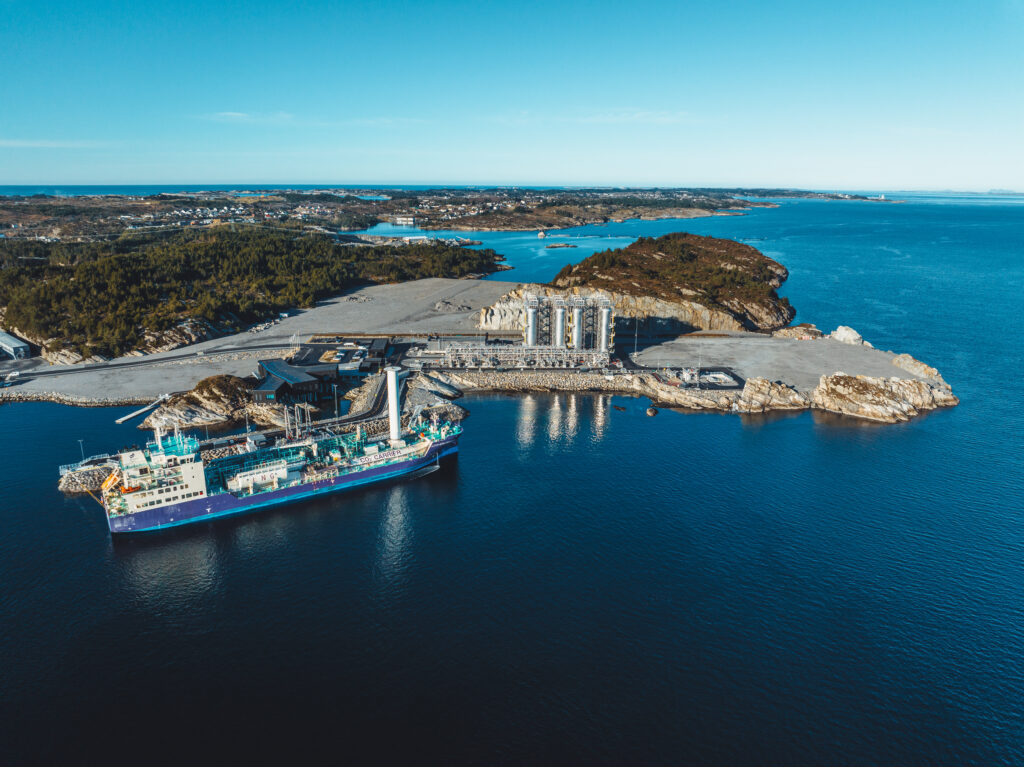
04.06.2025
Government Action on CO₂ Infrastructure Reduces Risk and Cost
Industry wants to cut greenhouse gas emissions through CCS, but lacks clarity on how CO2 transport and storage will be organized.
SINTEF recommends developing a national plan to provide direction and certainty for industrial actors in their future planning.
Who Will Take the Next Step?
Ragnhild Skagestad, Project Manager for Process Technology at SINTEF Industry, has led a concept study on CO2 infrastructure together with Kristin Jordal from SINTEF Energy. In their dialogues with industry, authorities, and technology communities, a common message has emerged: many actors have promising initiatives, but are uncertain about national developments. Without a shared direction, it is difficult to know where investments should be placed and how to ensure flexibility for future users. The project concludes that a comprehensive national plan is needed to outline how CO2 infrastructure can be built out in Norway – and that this responsibility must rest with the authorities.
Need for Coordination
According to Skagestad, we are already seeing a trend where projects are being developed on a first-come, first-served basis and tailored to the needs of individual actors. While this may work in the short term, it increases the risk that the resulting infrastructure will not be cost-efficient or accessible to others in the future.
Skagestad emphasizes that there are many possible approaches to building CO2 infrastructure. What matters most, however, is having an overarching understanding of how the different parts connect. Without this, there is a risk of technical challenges, high costs, and, in the worst case, some emission sources will be excluded.
SINTEF believes infrastructure must be viewed holistically – similar to the transport sector. Core infrastructure for captured CO2 should be planned and facilitated at the national level, so that individual companies can connect as needed.
High Engagement, Low Willingness to Pay
As part of the concept study, SINTEF arranged workshops and meetings with industrial clusters, transporters, authorities, and advisors. While many stakeholders are eager to contribute knowledge and input, few are willing to fund overarching planning efforts. Skagestad stresses that this is not due to a lack of interest. Rather, it stems from uncertainty about which actors will own, build, and operate the infrastructure. Many are happy to join reference groups and participate in processes, but expect the government to take the lead in planning.

Geographical Challenges
Uncertainty also arises from the question of where CO2 will be stored, and how it will be transported. This is especially true for actors located far from current solutions. – The Northern Lights terminal in Øygarden likely won’t be able to meet all future needs. For emission sources in Northern Norway or Eastern Norway, it’s unclear what kind of storage options will be available – or whether they will be able to connect at all without new pipelines or terminals, says Skagestad. She acknowledges several promising regional initiatives, but notes that a coordinated national assessment of technical and economic feasibility is still lacking.
Diverse Industries, Diverse Needs
Developing CO2 infrastructure brings together a wide range of industries. While Skagestad sees this as a strength, it can also lead to disagreements on what constitutes acceptable risk, and which standards should apply. Ernst Petter Axelsen from Gassnova, who serves as CLIMIT’s advisor for this SINTEF project, highlights the divide. – The oil and gas sector has long experience with safety-critical infrastructure and tends to apply strict and costly standards to CCS. For land-based industries, this can be challenging. Many smaller players have limited emissions volumes and tight financial margins; they need flexible and accessible solutions.
In December 2024, Gassnova published an article on the potential for cost reductions across the CCS value chain.
Proposal: Public Review
– One suggestion is that the state launches a Norwegian Official Report (NOU) on national CO2 infrastructure, says Skagestad. Such a process could provide scientific grounding and gather input from across the country. She believes the study should explore where infrastructure should be located, how different actors can connect, and what costs and benefits follow from various models. Skagestad stresses that this should not become a rigid master plan, but rather a flexible framework to guide further development. Goal is to reduce uncertainty and enable broader participation in CCS development.
Greater Predictability, Lower Risk
Skagestad hopes SINTEF’s report will spark discussion on how Norway can best develop a national CO2 infrastructure. She argues that a well-crafted government plan would provide the predictability needed to avoid costly missteps. The goal is not micromanagement, but rather to make it easier for industry to plan and adopt solutions that deliver both emission cuts and economic sustainability.
In April 2024, Gassnova reported on preparations for this concept study, which has received NOK 200,000 in support from CLIMIT.
